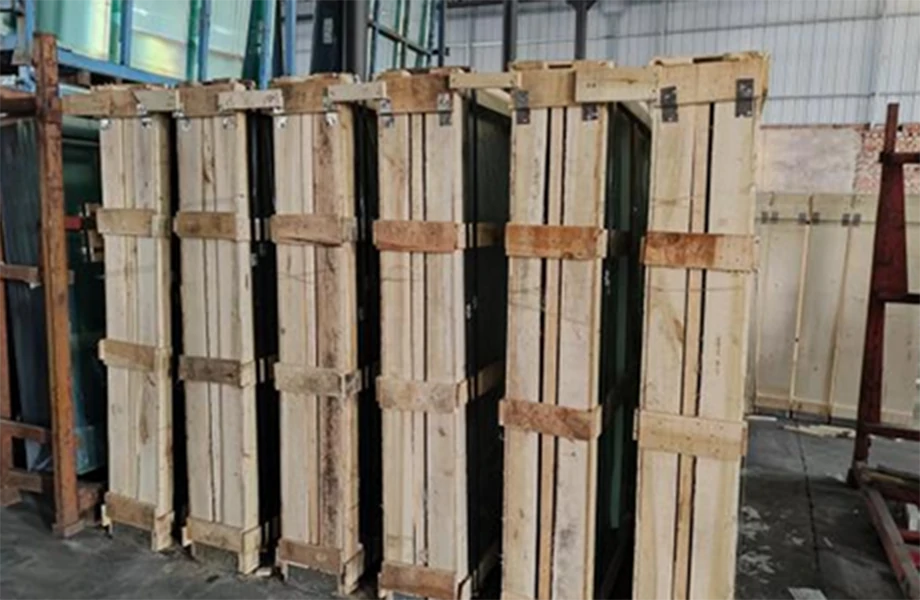Nov . 21, 2024 16:29 Back to list
what is the difference between tempered glass and regular glass
The Difference Between Tempered Glass and Regular Glass
Glass is an essential material used across various industries, from construction and automotive engineering to household items and decorative architecture. It comes in different types, each with its unique properties and applications. Among the most commonly discussed types are tempered glass and regular (or annealed) glass. Understanding the differences between these two types can help consumers make informed choices when selecting glass for specific applications.
What is Regular Glass?
Regular glass, often referred to as annealed glass, is the most basic form of glass produced through a process where raw materials like silica, soda ash, and limestone are melted together and then cooled down slowly. This slow cooling process allows the glass to relieve internal stresses, making it relatively stable and easy to work with. Regular glass is widely used in a variety of applications, including windows, picture frames, and table tops. However, due to its inherent properties, regular glass is relatively fragile and can break easily upon impact or under thermal stress. Moreover, if it does break, it shatters into sharp, dangerous shards that can cause serious injuries.
What is Tempered Glass?
Tempered glass, also known as toughened glass, is made through a specialized thermal treatment process that enhances its strength and safety features. After the glass is manufactured, it is heated to temperatures of approximately 620 to 650 degrees Celsius (around 1,148 to 1,202 degrees Fahrenheit) and then rapidly cooled. This quick cooling introduces additional internal stresses, resulting in a product that is significantly stronger than regular glass—up to five times stronger, depending on its thickness.
One of the most noteworthy characteristics of tempered glass is its ability to withstand sudden changes in temperature. This makes it an ideal choice for applications such as shower doors, glass railings, and glass doors that may be exposed to high heat. Furthermore, when tempered glass breaks, it shatters into small, blunt pieces rather than jagged shards, reducing the risk of injury.
Key Differences Between Tempered and Regular Glass
1. Strength The most significant difference between tempered glass and regular glass is their strength. Tempered glass is designed to endure a considerable amount of stress and impact without breaking, while regular glass can crack or shatter under lesser force.
what is the difference between tempered glass and regular glass

2. Production Process The manufacturing processes for the two types of glass are different. While regular glass cools slowly, allowing for internal stress relief, tempered glass undergoes a heating and cooling cycle that enhances its structural integrity.
3. Safety In terms of safety, tempered glass is favored for environments where the risk of breakage is higher. In instances of breakage, tempered glass's shatter pattern poses less of a hazard than that of regular glass.
4. Thermal Resistance Tempered glass is capable of withstanding higher temperatures and rapid temperature changes, making it suitable for situations where thermal stress is a concern. Regular glass, on the other hand, is more susceptible to thermal stress and can crack or break when exposed to sudden temperature changes.
5. Cost Due to its specialized manufacturing process, tempered glass is typically more expensive than regular glass. While the initial investment may be higher, the added durability and safety features can make tempered glass a better long-term choice for certain applications.
Applications
Given their distinct properties, tempered glass and regular glass are suited for different uses. Regular glass is common in areas where cost is a primary concern, and there is a lower risk of impact or adverse thermal conditions. Conversely, tempered glass is ideal for applications requiring high durability and safety, such as in facades of buildings, glass doors, and shower enclosures.
Conclusion
In summary, while both tempered glass and regular glass serve essential roles in various applications, their differences in strength, production processes, safety characteristics, thermal resistance, and cost should influence consumer choices. Knowing these distinctions will help ensure that glass products are chosen wisely, aligning with the needs and safety requirements of specific projects. Whether you are designing a home, an office space, or selecting materials for a unique project, understanding the properties of tempered and regular glass can help you achieve the best results.
-
Safety and Style with Premium Laminated Glass Solutions
NewsJun.24,2025
-
Reinvents Security with Premium Wired Glass
NewsJun.24,2025
-
Premium Float Glass Line for Modern Architecture
NewsJun.24,2025
-
Low Emissivity Glass for Energy-Efficient Architecture
NewsJun.24,2025
-
High-Performance Insulated Glass Solutions for Modern Architecture
NewsJun.24,2025
-
Elevates Interior Style with Premium Silver Mirror
NewsJun.24,2025
Related PRODUCTS














